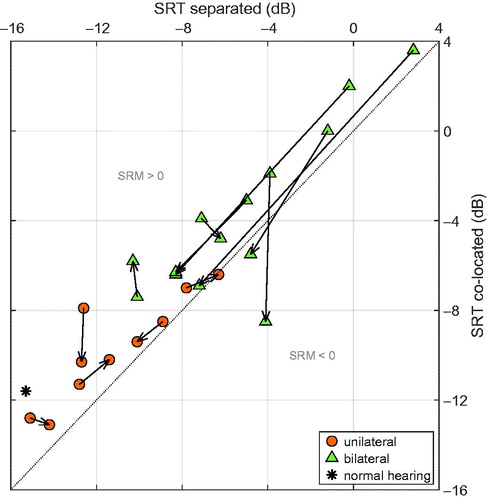Figures & data
Figure 1. Audiograms of the 12 study subjects: (A and B) Seven subjects with bilateral hearing loss; and (C and D) five subjects with unilateral hearing loss. Median values are indicated in bold line. Bi: bilateral; Uni: unilateral; AC: air conduction; BC: bone conduction.
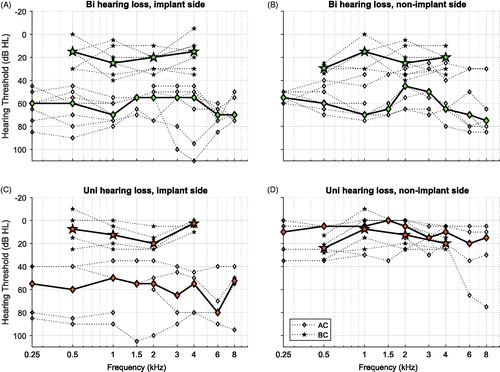
Table 1 . Information about the study subjects.
Figure 2. Schematic representation of the measurement set-up in the two different spatial conditions: (A) Target signal (S) and noise (N) from the same loudspeaker co-located in front of the test subject (0° azimuth); (B) signal from frontal loudspeaker, noise from four loudspeakers at ± 30° and ± 150° around the test subject.
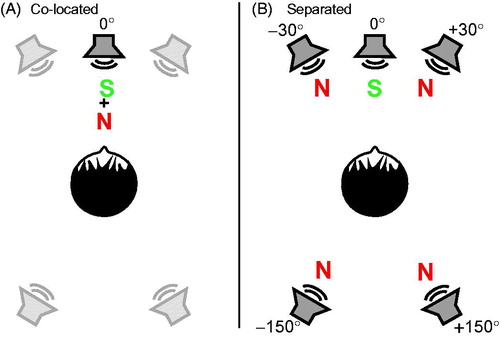
Figure 3. Spatial Release from Masking (SRM) measured in unaided and aided condition: (A) histogram, unaided condition, (B) histogram, aided condition, (C) Unaided and aided SRM, with data from the same subject connected by a dotted line. Subjects with unilateral and bilateral hearing loss are distinguishable by the different markers, dot and triangle respectively. One aided data point (−4.5 dB) has been omitted in order to have a more suitable scale on the y-axis.
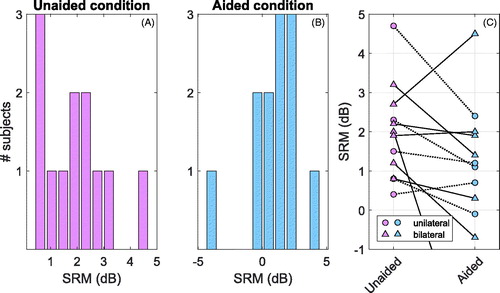
Figure 4. Boxplot of SRT (co-located and separated condition) and SRM, shown separately for patients with bilateral and unilateral hearing loss. Mean values are indicated with a green asterisk, medians with a red horizontal line. Individual data points are plotted in grey colour for patients with unilateral and bilateral hearing loss in circles and triangles, respectively. The y-axis in the right panel is limited between −1 and 5 dB, and one bilateral aided SRM data point (−4.5 dB) is therefore not shown. SRT: Speech Recognition Threshold; SRM: Spatial Release from Masking; uni: unilateral hearing loss; bi: bilateral hearing loss.
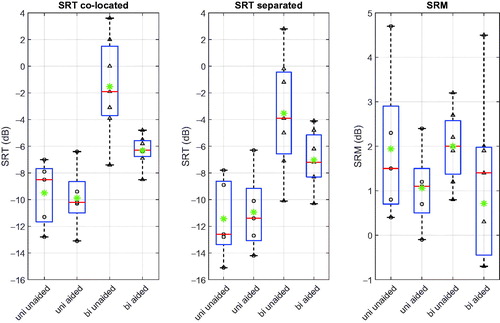
Table 2. Results of pair comparisons of aided and unaided conditions as well as distractor placement conditions are shown.
Table 3. Speech Recognition Thresholds (SRT) obtained from measurements in co-located and separated configuration for all the study subjects.
Figure 5. Post-hoc linear regression analyses of the aided SRT as a function of average hearing thresholds for low frequencies (LF; left column) high frequencies (HF; middle column), and pure tone average (PTA4; right column) in co-located and separated target-interferer spatial configurations. SRT: Speech Recognition Threshold.
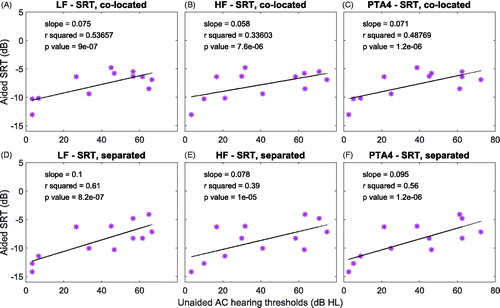
Figure 6. Correlation between separated SRT and PTA4 for the non-implanted ear for patients with unilateral and bilateral hearing loss separately. PTA4 is the average of tone thresholds at 500, 1000, 2000, and 4000 Hz. SRT is the speech recognition threshold when 40% of the target speech is correctly understood.

Figure 7. Correlation between SRT aided benefit and PTA4 at the contralateral ear. PTA4 is the average of tone thresholds at 500, 1000, 2000, and 4000 Hz. SRT aided benefit is calculated as the difference between aided and unaided SRT in the same spatial configuration. A positive benefit corresponds to a lower SRT in aided condition compared to the unaided one. Patients are divided in two groups, with unilateral and bilateral hearing loss. SRT: Speech Recognition Threshold.
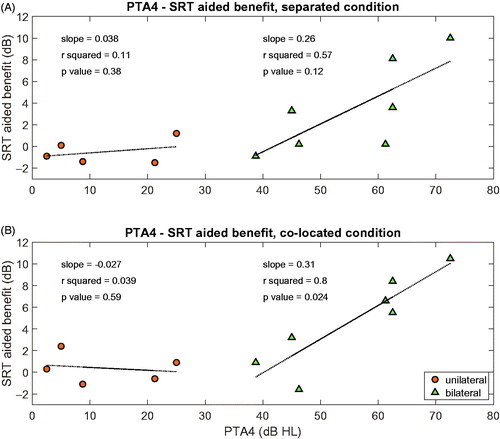
Figure 8. Speech Recognition Thresholds (SRT) obtained in the four measurement conditions: target and interferer from the same loudspeaker (coloc) or from spatially separated ones (sep), without (unaided) and with the BCI device (aided). The boxplot shows how the data is distributed, with mean and median values marked by a black star and a red horizontal bar, respectively. Individual data points are plotted as orange circles and green triangles for patients with unilateral and bilateral hearing loss, respectively.
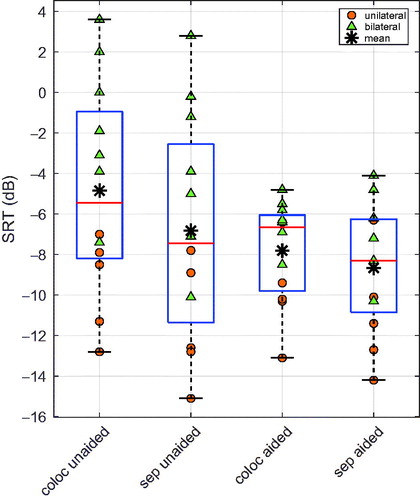
Figure 9. Speech Recognition Threshold (SRT) in co-located and separated configuration. The origins of the arrows represent the unaided result, the heads point at aided results. Values for normal hearing subjects estimated from a previous study (Asp and Reinfeldt Forthcoming) are marked with an asterisk. SRTs from patients with unilateral and bilateral hearing loss are marked with orange circles and green triangles, respectively. SRM (Spatial Release from Masking) is positive above the unity line (SRT separated: SRT co-located, dotted line) and negative below.
